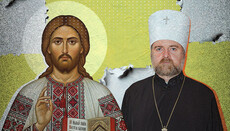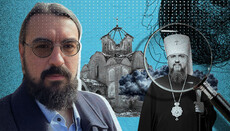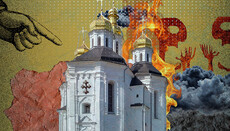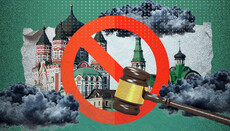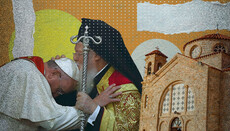"Church vandalism" of Phanar in the 20th century and the Russian Church
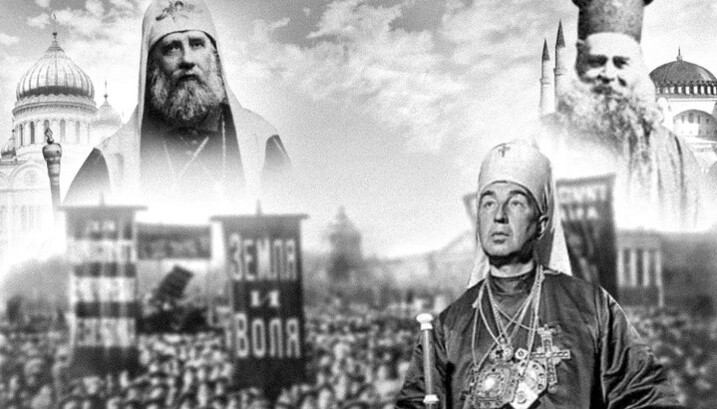
Recognition of the schismatic Renovationists by the Constantinople Patriarchate in the 20th century and obvious parallels with modernity.
Today, when we see the church canons trampled on before our eyes, many Orthodox believers think that such lawlessness is unique and committed for the first time. However, this is not the case.
In his recently published letter, His Beatitude Metropolitan Anastasios, Primate of the Albanian Church, noted that “the situation in Ukraine, provoked by Patriarch Bartholomew, resembles the ‘Melitian schism’, to overcome which the Church sets out different procedures and that the final solution was given by the First Ecumenical Council".
However, parallels with today's events can be found not only in ancient times (the Melitian schism) but also in relatively recent history. We are talking about the recognition by the Patriarchate of Constantinople of the Renovationist schism or the so-called “Living Church” that arose in the territory of the Soviet Union. Then the Phanar used, in fact, the same methods as now and finally received a proper assessment of its actions by the most prominent and authoritative representatives of the Russian Church.
Phanar and USSR: in search of protection
The Patriarchate of Constantinople has always sought strong political allies that would help it survive and gain a foothold in the territory of the former Byzantine Empire after the Turkish conquest. From the very beginning of the 20th century, the residence of the Patriarchate of Constantinople, located in one of the districts of Istanbul, has been repeatedly at risk of liquidation. Several times, the Turkish government attempted to abolish the Patriarchate of Constantinople and expel the higher Greek church hierarchy from its territory. It passed several laws that made the stay of the Constantinople clergy in the territory of the Turkish state as complicated as possible. Therefore, the Phanariots maintained contacts with representatives of international organizations, members of other Christian denominations (primarily Anglicans and Catholics), representatives of the Greek state and the United States of America.
This connection, and especially taking into account the current situation, would not be flawed if it did not make the Patriarchate of Constantinople completely dependent on political and religious figures and their interests.
There were many such examples.
In particular, Patriarch Gregory VII personally opposed the calendar reform initiated by his predecessor, Patriarch Meletios but yielded to pressure from the Greek authorities, on which he was fully dependent. By his own admission, "the change in the calendar was imposed by the Greek government".
As you know, in the 20s of the last century with the fall of the Ottoman Empire and the formation of the Turkish state, Mustafa Atatürk came to power. His regime in every possible way impeded the activities of the Phanariots, seeing the latter as reactionaries who destabilize society.
In turn, the government of the USSR, which came to power as a result of the October Revolution of 1917, had a rather large influence on Turkey, as it provided significant military assistance to it. Therefore, the Phanariots, in search of protection from the Atatürk regime, turned their attention to Moscow.
It must be emphasized here that the young Soviet government in the 1920s and 1930s headed for the destruction of the Russian Orthodox Church. In this case, it was not only about the physical liquidation of the hierarchy and priests of the Russian Orthodox Church. The Bolsheviks created a parallel church structure, which, according to the creators, was supposed to destroy the Church from the inside. To this end, the government of the USSR initiated the emergence of the so-called "Living" or "Renovationist" Church. Researchers believe that the characteristic features of renovationism were recognition of the “justice of the social upheaval in the country”, close cooperation with the Soviet government, and in the first years of activity – reliance on repressive bodies.
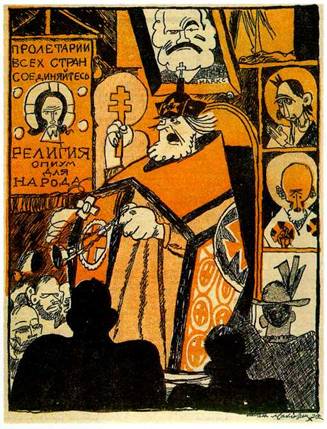
It was with the help of these very repressive organs that in May 1922 the “Living Church” was created, and the Patriarch of the true Church (Tikhon) was arrested. In addition, the authorities, on the one hand, supported the "Living Сhurch” followers and, on the other hand, maximally opposed the functioning of the Russian Orthodox Church, which led to a sharp increase in the number of "Renovation" parishes. As a result, already in 1923 more than half of the episcopate, priests and parishes were part of the “Living Church”.
However, the schismatic Renovationists had a serious problem – the lack of recognition of the legality of their actions on the part of other Local Orthodox Churches. It was for this purpose that they decided to resort to the Phanar’s s help. It was easy to do because the Phanariots were in a very difficult position.
Recognition of the schism
In March 1924, Patriarch Gregory VII of Constantinople sent a copy of the circular on the introduction of a new calendar style (the same circular was sent to the name of Patriarch Tikhon) addressed to the head of the Renovationist synod, "Metropolitan" Eudokim. The "Living Church" perceived this circular as an act of recognition by the Ecumenical Patriarchate. In turn, the Renovationist synod (definitely, with the consent of Trotsky, Smidovich and Tuchkov) offered the head of the Phanar, as well as his retinue, residence in the Soviet Union “with full maintenance, subject to the legalization of the synod and all resolutions of the (Renovationist – Ed.) 1923 Council, which removed Patriarch Tikhon."
Apparently, in a burst of gratitude for such a generous offer (which he still rejected), Patriarch Gregory VII urged Patriarch Tikhon to abandon the Patriarchate. Moreover, Patriarch Gregory said that he would take over “at the invitation of church circles” of the USSR “the matter of pacifying the turmoil and disagreements that have recently occurred in the fraternal Church, appointing a special patriarchal commission from the bishops for this”. At the same time, Patriarch Gregory VII emphasized that in its activity this commission should rely on “church movements loyal to the Government of the USSR”.
It is known that the patriarch’s position was significantly affected by the views of the representative of the Patriarchate of Constantinople, Archimandrite Vasily (Dimopulo), who resided in the USSR and informed the patriarch very tendentiously and one-sidedly. For example, Father Vasily went so far as to “re-sanctify” the thrones of the temples seized in the canonical Church and support “Eucharistic” communion only with the Renovationists.
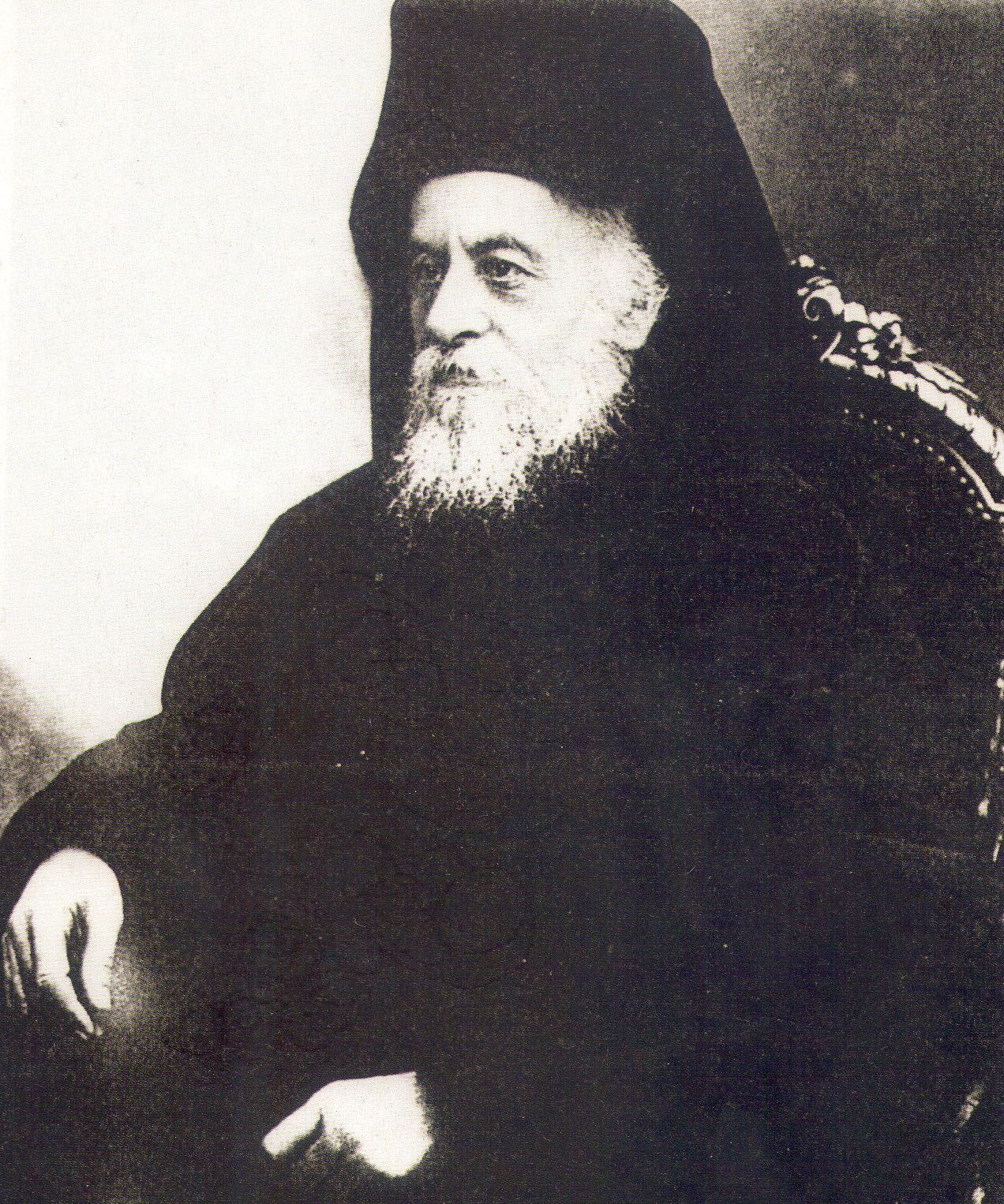
In a response letter to the name of Patriarch Gregory, the Primate of the Russian Church, St. Tikhon, wrote: “We were embarrassed and surprised that the head of the Church of Constantinople, without any prior contact with Us as the legal representative and head of the Russian Orthodox Church intervenes in the internal life and affairs of the autocephalous Russian Church. The Holy Councils (see the 2nd and 3rd Rules of the Second Ecumenical Council, etc.) recognized only the primacy of honor for the bishop of Constantinople but did not recognize and do not recognize the primacy of authority for him ... Therefore, any sending of any commission without the intercourse with Me as the only legitimate and Orthodox First Hierarch of the Russian Orthodox Church, without My knowledge, is unlawful, will not be accepted by the Russian Orthodox people and will not bring peace but even more turmoil and schism into the life of the already suffering Russian Orthodox Church ... The people are not with schismatics, but with their legal and Orthodox Patriarch.”
After this letter, Patriarch Gregory completely broke any communion with Patriarch Tikhon and did everything to make the Renovationists recognized by other Local Churches. Ultimately, of the four Eastern Patriarchates, only the Patriarch of Antioch, who was not in the orbit of the Phanar’s influence, refused to side with the Renovationists.
Patriarch Gregory completely broke any communion with Patriarch Tikhon and did everything to make the Renovationists recognized by other Local Churches. Ultimately, of the four Eastern Patriarchates, only the Patriarch of Antioch, who was not in the orbit of the Phanar’s influence, refused to side with the Renovationists.
“Church vandalism” of Phanar and Metropolitan Anthony (Khrapovitsky)
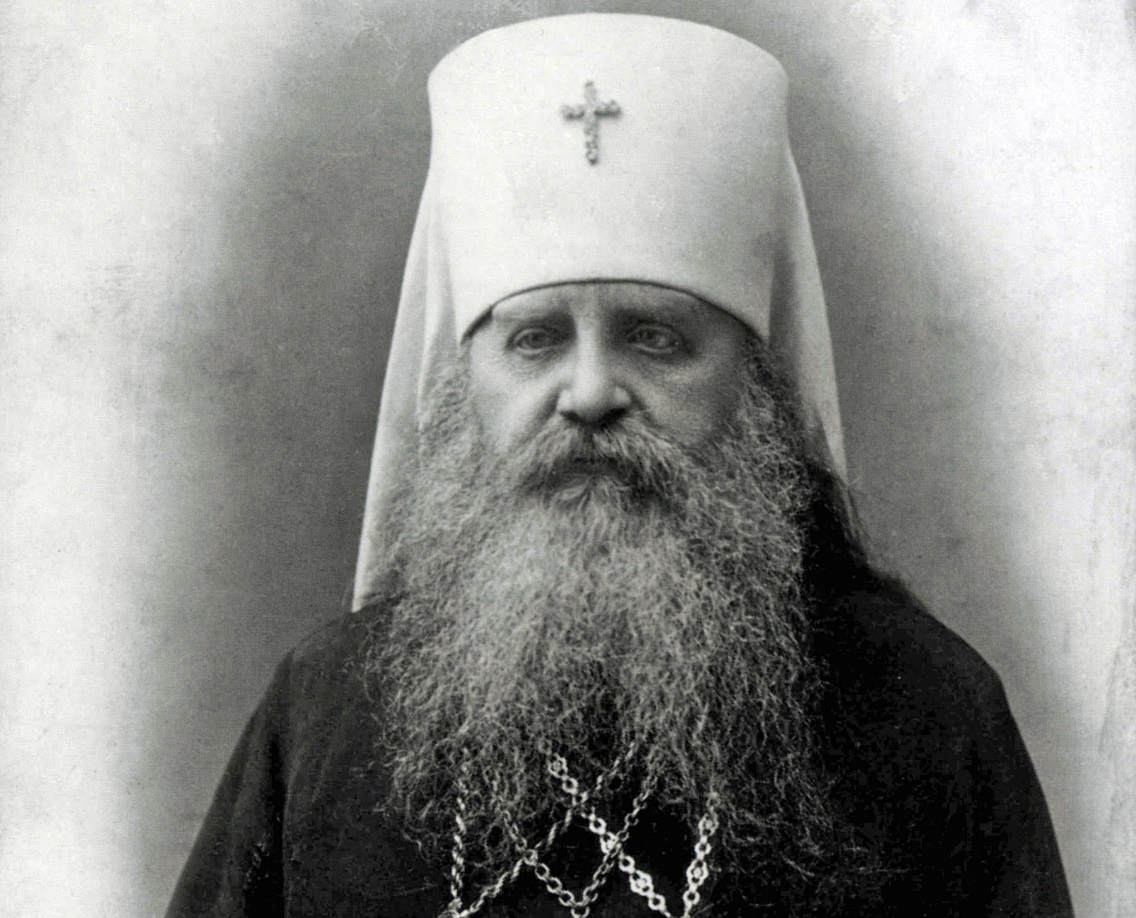
Interestingly, Patriarch Gregory VII of Constantinople was a great supporter of the Soviet power and considered himself entitled to punish the bishops of the Russian Orthodox Church who opposed the Soviet regime. In particular, he banned from priesthood two archbishops in Constantinople - Anastasy (Gribanovsky) and Alexander (Nemolovsky) – because they commemorated Patriarch Tikhon and advised them to recognize the Bolsheviks. Having been on the patriarchal throne for about a year, Gregory VII was replaced by Patriarch Constantine, to whom Metropolitan Anthony (Khrapovitsky) wrote:
“Until now, since my youth, I have raised my voice only to glorify the Eastern, in particular Ecumenical Patriarchs, verbally and in print ... I have always declared myself, by deed and word, as philhellene and a great idea lover. However, I am not a papist and I remember well that besides the great bishops of the Church, there were many others, and internal enemies of the Church, heretics and even heresiarchs ... The last two predecessors of Your Holiness also tended to disobey the Holy Church and canons.”
Metropolitan Anthony called "church vandalism" the situation that developed in the Orthodox world due to the Phanar when the Patriarchs of Constantinople intervened in the affairs of other Orthodox Churches.
When the Finnish authorities removed Archbishop Serafim (Lukyanov) from managing the Church of Finland, the Phanariots proposed, without agreement with him, and contrary to his opinion, to ordain Archimandrite Herman (Aava) as bishop. And it was he who was later elected head of the Church of Finland.
Metropolitan Anthony (Khrapovitsky) called Herman “a false bishop” and urged those who concelebrated and communed with him to repent. In a letter to hieromonk Polycarpus of Valaam, Vladyka wrote: “I received your sad news and lamented much about the ruthless bitterness of the Greek archpastors, and I consider Herman just a layman ... It is clear that a heretical gang entered the Patriarchate of Constantinople ... In the God’s name, I advise not to obey the false bishop Herman and the shamefully deceased Patriarch Gregory VII, who ruined the patriarchy with his deed ...”
Metropolitan Sergius (Stragorodsky) and the renovationism of Phanariots
Patriarch Constantine stayed on the throne for only 43 days and was first repatriated by the Turkish government from the country and resigned the Patriarchate a few months later. In his place, Metropolitan Basil of Nicaea, who continued the line of rapprochement with the Renovationists was elected.
The Synod of the “Living Church” responded to this election with a message in which it asked the new patriarch to "paternally take care of our church sorrow and move to save the ailing daughter – the Russian Church", and also invited him to take part in the renovationist "Local Council".
Patriarch Basil replied: “We are present in absentia with you and, as far as possible, will contribute to the speedy and complete elimination of the sad division, which, being harmful to your Orthodox Church, also fills the Great Mother Church with the deepest sorrow.” This letter, as well as some other documents, allowed the schismatic Renovationists to claim that they "were in communion with the original center of Eastern Orthodoxy" and reject all canonical bodies of church authority.
The schismatics constantly emphasized that they were recognized by the eastern patriarchs, which meant that there could be no doubt about their legitimacy.
In response to a letter from a renovationist bishop who resorted to such arguments, Metropolitan Sergius (Stragorodsky) wrote: “An indication that some Patriarchs, for example, of Constantinople and, most recently, of Jerusalem, exchanged messages with the [renovationist] Synod, convinces us little. We know that only those are in the unity of the Church who are in communion with their lawful bishop and patriarch, that one who is excommunicated by his patriarch cannot be accepted in communion with others (Canon 1, Council in the Church of the Holy Wisdom). And the one who comes into communion with an excommunicated one should be excommunicated (Apostolic canons 10, 12)”
So, if the Patriarchs of Constantinople and Jerusalem entered into communion with the Renovationists, all the worse for the Patriarchs. All, both patriarchs and lay people, are equal before the law of God. So, when in the 15th century the Patriarch of Constantinople fell away into union with Rome, the Russian Church refused to follow him and the priests living in Russia did not become Orthodox. So, the communion of the Patriarch of Constantinople with the Renovationists can only make the Patriarch a Renovationist rather than make Renovationists Orthodox.”
Agree, if in this quote instead of the term “Renovationists” you write “the OCU members” and replace the Patriarch of Jerusalem by the Patriarch of Alexandria, the words of Metropolitan Sergius seem to be written today.
As we see, once again the aphorism that history always repeats twice turns out to be fair. On the one hand, this is bad, because it means that the figurants in the present story did not draw the right conclusions from what was before. But, on the other hand, repeating itself, history shows us the mechanisms that can help overcome current problems.
And most importantly, seeing how actively and energetically the structure of schismatics is being promoted now, we should not give in to anxiety and, perhaps, even despair. The Church of Christ in its history has repeatedly passed the test of heresies and schisms, but each time it made us recall the words of Christ: “I will build up My Church, and the gates of hell will not prevail against it” (Matthew 16, 18).
That is why our attitude towards the schismatics from the OCU should be based on the same principles as the attitude towards the Renovationists in the 1920s on the part of the Russian Church. These principles are valid today – the Gospel, the Tradition of the Church and its canons.
